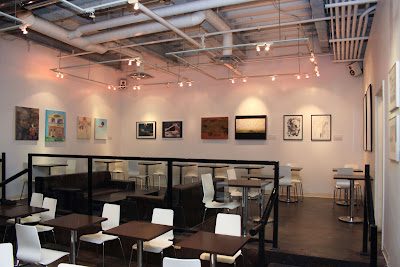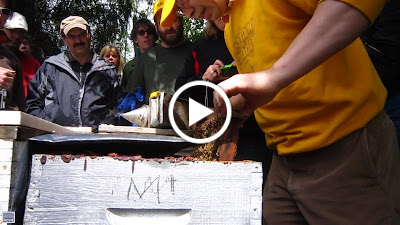
Like honeybees, I view wax as the most precious building material.
When I see wax, I imagine a young worker bee hanging quietly in a corner of the hive shedding sheets of wax pages. Patiently, she excrete the delicate wax scale from her hypopharyngeal glands located in her abdominal pockets. Like pulling pages out of a printer, she then chews the wax with her mandibles, softening it and deposit the mouth full onto a cell wall. This is a laborious process for the worker bee. Wax is intimately connected to their way of life. As an artist, I hope to treat beeswax with the same patience and intimacy.
Today I pushed an encaustic piece into maturity by building layers in the intuitive, raw, Jackson Pollock manner. Essentially I am using drops and beads of coloured wax to optically push the eye to not focus but try to contain the impression of an active swarm migration.
Visualizations of satellite images and live location based mapping has played a role in catalyzing my new aesthetic direction as well.
 |
| From Oil |
 |
| From Oil |
 |
| From Oil |
 |
From Oil " The Overlay Media reference database contains the position of approximately 350,000 cell positions. The position of these cells was calculated using approximately 200 million measurement samples. This data is kept up-to-date by applications using the moLocate location service." From: http://overlaymedia.com  "Satellite image of circular crop fields in Haskell County, Kansas in late June 2001. Healthy, growing crops are green. Corn would be growing into leafy stalks by then. Sorghum, which resembles corn, grows more slowly and would be much smaller and therefore, (possibly) paler. Wheat is a brilliant gold as harvest occurs in June. Fields of brown have been recently harvested and plowed under or lie fallow for the year." From: Wiki |








